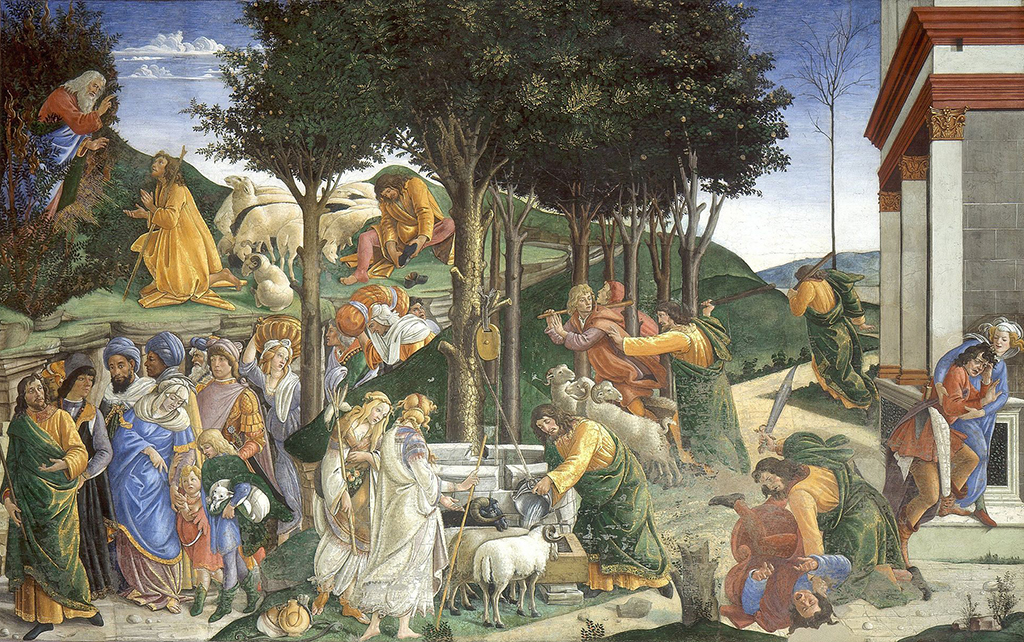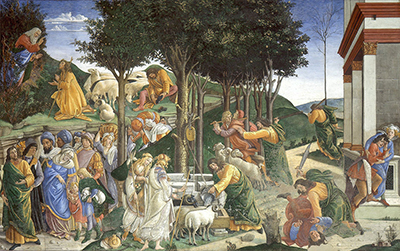This fresco is also sometimes known as Youth of Moses. The artwork features a large variety of figures within a landscape setting, who are all related to a particular theme which refers to religious scripture.
Sandro Botticelli worked on this painting between the years of 1481–1482 with the aid of a number of highly skilled assistants. They were essential in allowing the artist to take on more commissions and build his reputation at a faster rate. All of the major Renaissance masters would do similar but there would be stringent controls over who could contribute and the main artists would always keep a close eye on the assistants' progress in order to avoid standard dropping. The entire era was heavily influenced by stories from the Bible and the trials and tribulations of Christ across his lifetime would be a major part of that. This particular fresco would eventually be added to the southern wall of the Sistine Chapel, a building which also holds a number of impressive contributions from other Renaissance masters such as Michelangelo.
Rather than focusing on Christ, this painting captures moments from the life of Moses. Sandro Botticelli chooses to place different episodes together in the same composition. For example, you will see Moses killing an Egyptian after the latter behaves in a poor manner. In another he helps some young women who fall foul of bullying from some shepherds. He then receives word from God to return to Egypt and also helps to encourage Jewish people to relocate. In order for us to identify the same figure across the painting in these different scenarios, Botticelli gives him a uniquely coloured outfit which contrasts with the many other figures features across this large fresco. The overall piece measures more than five metres wide, and three and a half metres high and it remains in its original location in the Sistine Chapel, Rome.
The artist would become known as one of the most important Renaissance artists, and this was reflected in the impressive list of commissions which he received across the full length of his career. Artistically, the most impressive artworks that he came up with were The Birth of Venus, Primavera and Adoration of the Magi although there were many other highlights to enjoy. Botticelli may not be part of the main three, as they are often called, but is still highly significant alongside Raphael, Da Vinci and Michelangelo. Botticelli also helped to bring in certain content that others had never used before and so his influence was particularly considerable in widening the scope of what we consider to be Italian Renaissance art and this example of the Trial of Moses offers several different interesting elements to it.





